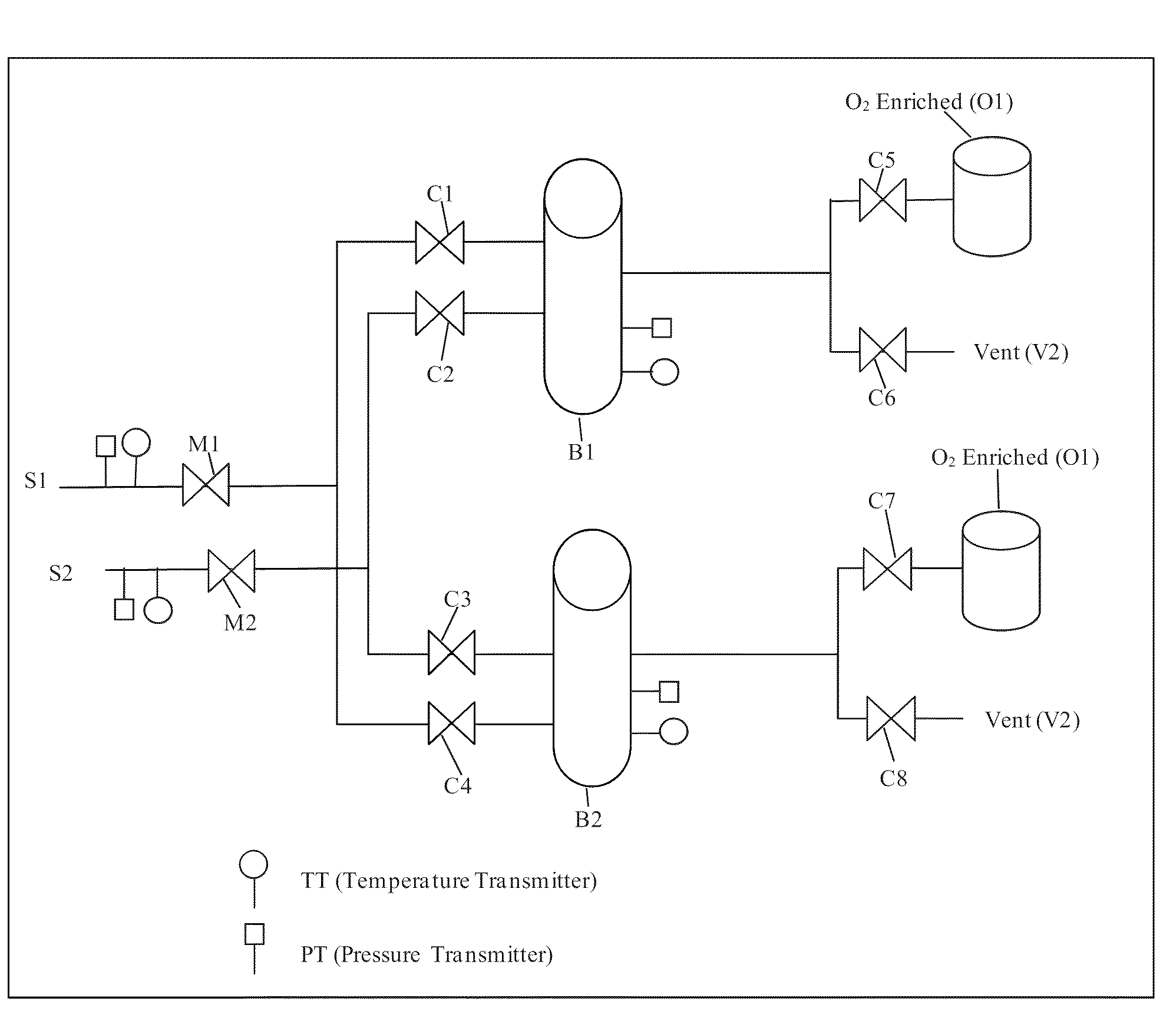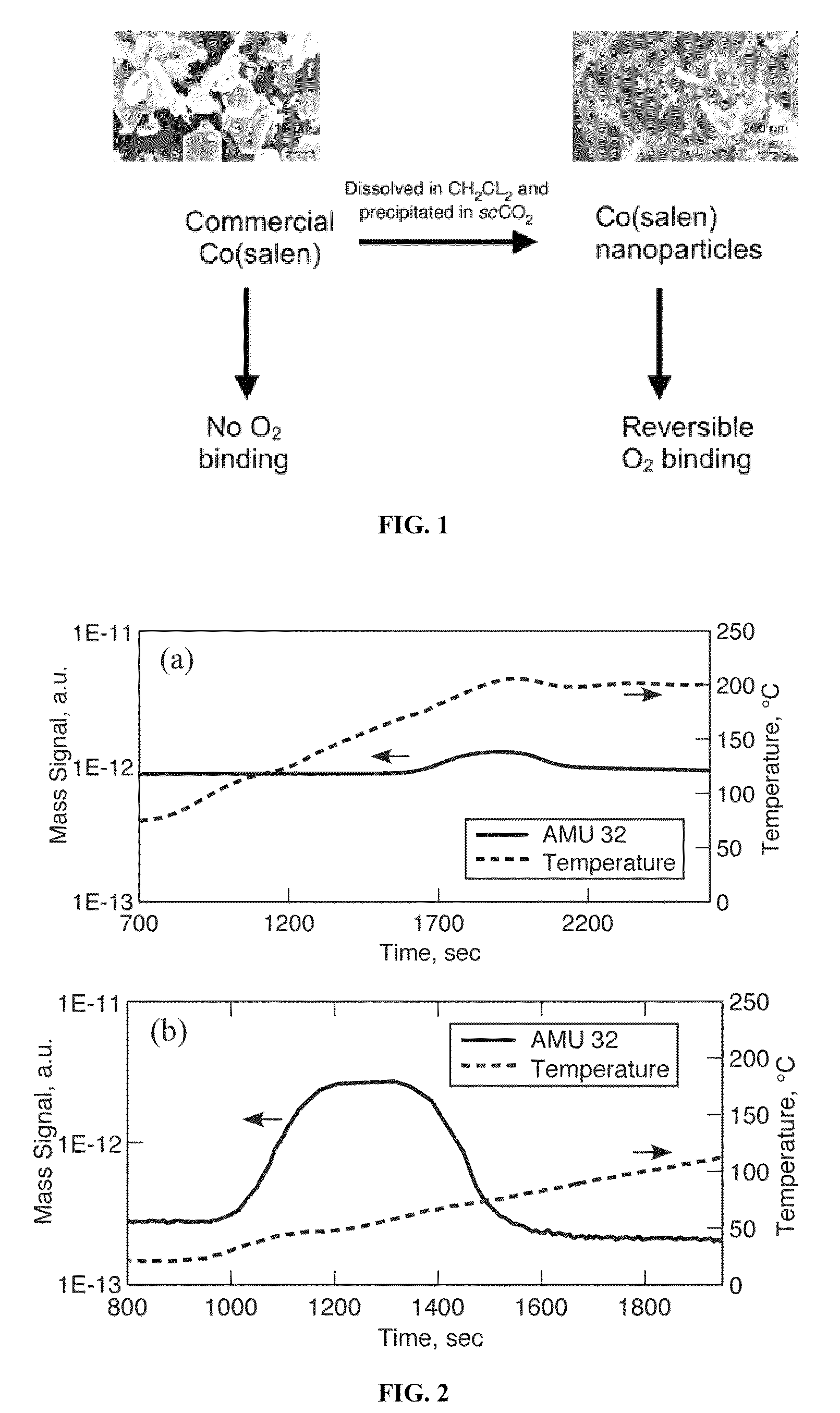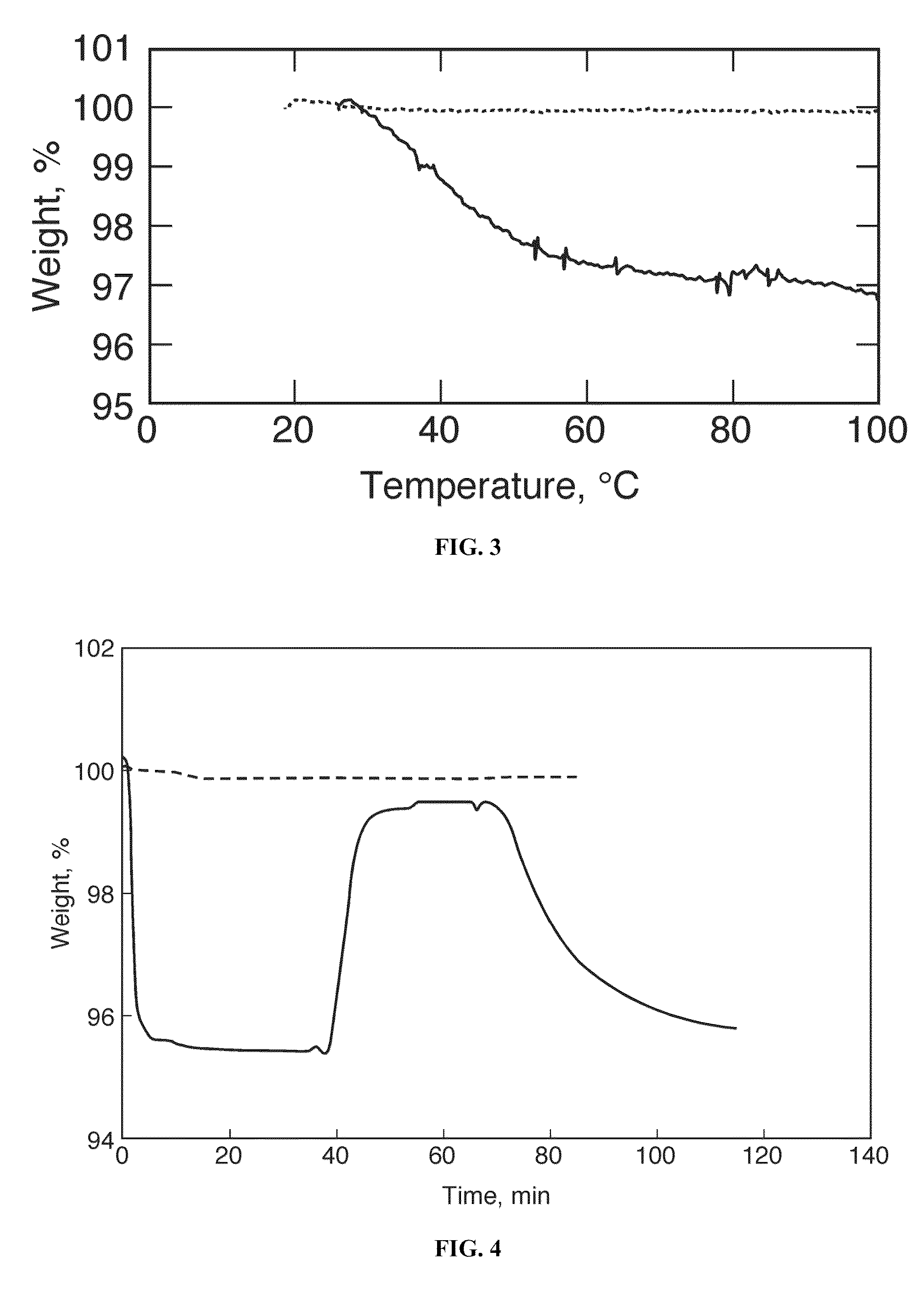Oxygen binding of nanoparticulate metal complexes
a nanoparticulate metal and complex technology, applied in the direction of explosives, other chemical processes, separation processes, etc., can solve the problems of slow oxygenation rate, hampered successful utilization, and the ability of such complexes to absorb oxygen, and achieve low affinity for nitrogen and high reversible equilibrium capacity. , the effect of high oxygenation ra
- Summary
- Abstract
- Description
- Claims
- Application Information
AI Technical Summary
Problems solved by technology
Method used
Image
Examples
example 1
Physical Properties of Unprocessed Co(salen) and Nanoparticulate Co(salen)
[0042]In this example, the physical properties of unprocessed Co(salen) nanoparticulate Co(salen) formed according to Subramaniam et al., U.S. Patent Application No. 2007 / 0134338 were investigated. The electron paramagnetic resonance and electronic absorbance spectroscopies', and elemental analysis (“ICP”) characterizations of the unprocessed and the processed nanoparticulates of the Co(salen) produced similar spectral and analytical results, demonstrating that the metal complexes remain intact following precipitation. See Johnson et al., Nanoparticulate Metal Complexes Prepared with Compressed Carbon Dioxide: Correlation of Particle Morphology with Precursor Structure, J. Amer. Chem. Soc. 127 9698-9699 (2005). In this example, the physical properties of the nanoparticles were further characterized.
[0043]More specifically, the true (skeletal) density analysis of both the commercial Co(salen) as well as Co(sale...
example 2
Temperature Programmed Desorption (“TPD”)
[0046]The Co(salen) nanoparticles displayed a visible color change from brown to green upon exposure to air. In contrast, the unprocessed starting Co(salen) complex did not show any such color change when exposed to air. To determine whether this color change was caused by enhanced oxygen binding, a temperature programmed desorption (“TPD”) study was carried out on both samples after exposure to ambient oxygen.
[0047]More specifically, TPD of the materials was carried out using argon at 30 sccm. The powders (306 mg of the commercial Co(salen) and 8.3 mg of the Co(salen) nanoparticles) were loaded in a fixed bed arrangement into a quartz tube reactor and heated from room temperature to 200° C. at 5° C. per minute for the Co(salen) nanoparticles and 6.7° C. per minute for the commercial Co(salen). The effluent gases were analyzed using a Pheiffer Vacuum mass spectrometer (Omnistar Quadrupole Mass Spectrometer Model GSD 300 02).
[0048]As shown in ...
example 3
Thermogravimetric Analysis (“TGA”)
[0049]In this example, thermogravimetric analysis was utilized to further quantify the amount of oxygen bound to the samples. The oxygen desorption data were collected with a TA Instruments Q50 Series Thermogravimetric Analyzer with a heating rate of 5° C. per minute and balance and sample flowrates of 40 and 60 sccm respectively. For the nanoparticle exposed to air, there was a 3% to 4% mass decrease with oxygen desorption starting at 32° C. (FIG. 3). As control, the unprocessed Co(salen) was investigated and no mass change was observed as the sample was heated to 100° C.
[0050]To obtain additional quantitative information on the oxygen binding, including whether it is a reversible process, the TGA instrument was modified so that oxygen could be passed through the furnace in a continuous fashion. The sample (1.192-9.335 mg of the commercial Co(salen) and 0.717-2.245 mg of the Co(salen) nanoparticles) was first equilibrated to 60° C. and held there f...
PUM
| Property | Measurement | Unit |
|---|---|---|
| temperature | aaaaa | aaaaa |
| temperature | aaaaa | aaaaa |
| length | aaaaa | aaaaa |
Abstract
Description
Claims
Application Information
 Login to View More
Login to View More - R&D
- Intellectual Property
- Life Sciences
- Materials
- Tech Scout
- Unparalleled Data Quality
- Higher Quality Content
- 60% Fewer Hallucinations
Browse by: Latest US Patents, China's latest patents, Technical Efficacy Thesaurus, Application Domain, Technology Topic, Popular Technical Reports.
© 2025 PatSnap. All rights reserved.Legal|Privacy policy|Modern Slavery Act Transparency Statement|Sitemap|About US| Contact US: help@patsnap.com



